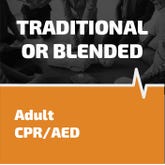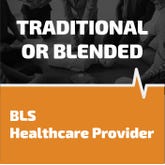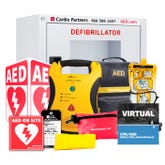CPR Instruction Over the Phone by 911 Operators
- Sep 10, 2018

A recent statement in American Heart Association’s journal concludes that many more people survive sudden cardiac arrest when 9-1-1 dispatchers help callers assess victims and begin CPR as soon as possible.
The “Chain of Survival” is the series of actions that can improve the chance of surviving sudden cardiac arrest. CPR keeps blood flowing, especially to the brain, and prolongs the window that medical personnel have to get the heart pumping again. Unfortunately, getting bystanders to perform CPR is one of the weakest links in the Chain of Survival.
While almost everyone knows to call 9-1-1 during an emergency, dispatchers often only direct other emergency personnel to the scene instead of telling the caller what they can begin to do. Unsurprisingly, EMS often arrives too late to have an impact.
The AHA has four recommendations for dispatchers and EMS. They should assess if someone has had a cardiac arrest and if they have, instruct the caller in administering CPR immediately. Panicking callers are often hesitant to perform CPR, so dispatchers need to sound confident as they give Hands-Only CPR instruction—but only for cardiac arrest not caused by asphyxia. Communities should gauge how effective dispatchers are at providing aid during cardiac arrest. Finally, quality assurance programs should ensure all emergency response systems and hospitals are responding appropriately to sudden cardiac arrest.
The survival rate for victims of sudden cardiac arrest outside of hospital is around 10 percent. In communities where people are aware of the Chain of Survival, that figure is nearly doubled. The AHA encourages bystanders to be unafraid of performing CPR. The chances of accidentally hurting someone are very small, and the chance of helping save a life are great. For adults, skipping mouth-to-mouth and focusing on chest compressions has no negative consequences and can promote a faster reaction. Adding mouth-to-mouth is still recommended for all children and infants, who often need additional breathing support, or for adult with cardiac arrest caused by asphyxia, such as drowning. By improving the frequency and quality of CPR instruction over the phone by 9-1-1 operators, anyone has a chance to help save someone’s life.









 CALL US:
CALL US: